The traditional transplanting of indoor plants implies careful removal of the old soil, spreading the roots on a hill of fresh soil, and filling up the soil from above. Small and medium-sized plants are transplanted after purchase and annually in the spring. For this process, you should pick up a proper pot. Pots vary in size, material, and drainage holes.
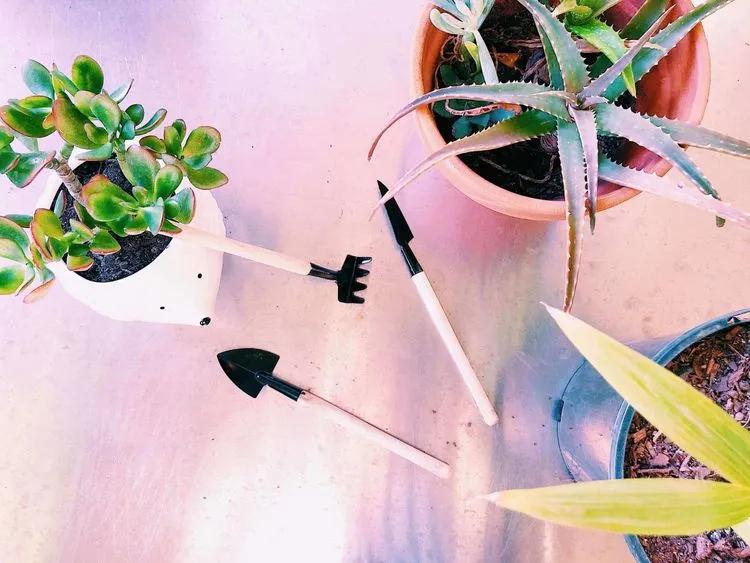
Buying A New Plant
- Before buying a flower, you need to think about its place in your home. It is necessary to consider the size of the plant and its growth rate. There is a golden rule — the bigger the room is, the higher the ceilings, and the easier the plants can endure closed spaces' hardships.
- It is advised not to place a new plant next to those which are already used to the house. A newly bought plant needs a two-week quarantine, during which the flower should be closely monitored. During this period, latent diseases can appear, and if the plant is infected with parasites, you will see traces of their activities immediately.
- The first home watering is carried out depending on the condition of the soil in the pot. If the soil is moisturized, it is better to water it in 3-4 days. Do not bother the plant; let it gently get used to the new place. After all, most likely, the indicators of light, humidity, and temperature have changed compared to those in the store. The pruning should be done no earlier than a few months after purchase. However, do not forget to remove faded inflorescences and dry leaves regularly.
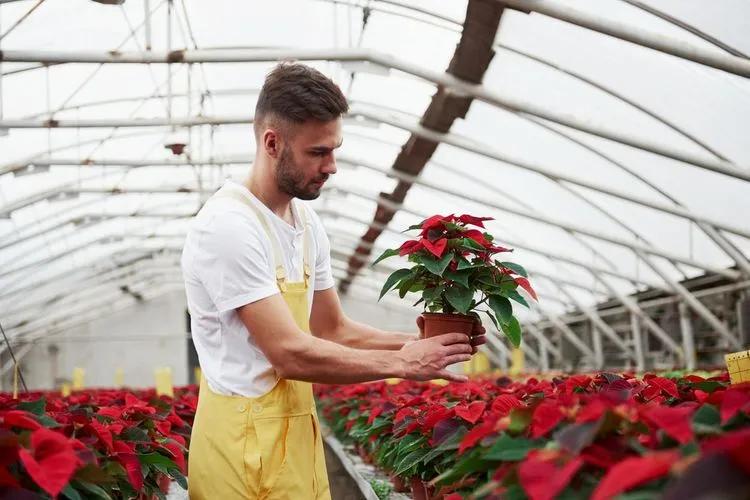
Equipment
Are you sure you have everything you need? Before leaving the plant shop, think if you have all the equipment to keep your new friend alive. Namely:
- Pot. Choose the best and most beautiful one that will fit into your interior
- Fertilizer. Plants need to be "fed" from time to time
- Funnel. Don't forget about watering!
- Soil. For transplanting a plant into a new pot.
If you've bought everything you need, then you're ready to leave the flower shop!
Size
The plant's roots must fit freely in the pot, while there should be another 0.7-2 inches (2-5 cm) from all sides to the walls. In a pot that is too tight, the flower will not grow and constantly dry out; in a pot that is too large, water will stagnate, and the flower can rot. A few inches should also remain from the soil to the top edge of the pot, so the water does not overflow.
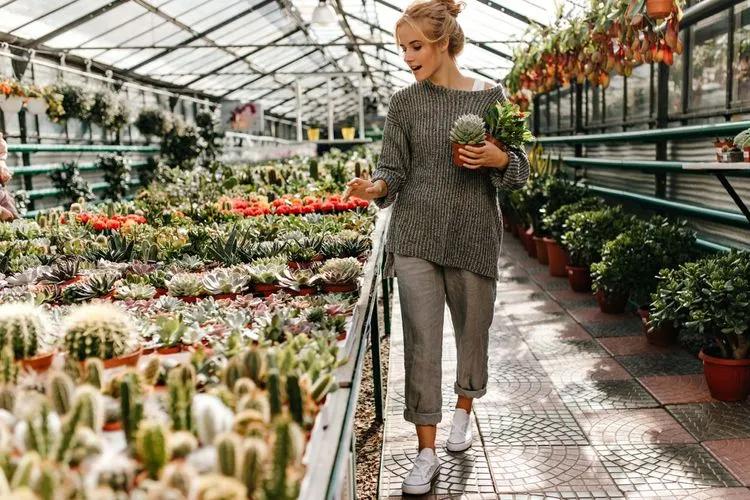
Material
The materials from which the pots are made can be divided into water-permeable and waterproof.
- The first one, which includes clay or terracotta pots, breathes with its entire surface, evaporating water with its walls. It is suitable for plants whose soil does not need to be constantly wet: Cacti, Ficuses, Monstera, Epipremnum, Philodendrons, Sansevieria, and some Orchids.
- Waterproof materials are plastic and ceramics. Such a pot only evaporates water from above, and the soil remains moist for longer. Growing Calatheas, Ferns, Begonias, and flowering plants is easier in these pots.
- It is better not to use glass pots. The earth inside does not look aesthetically pleasing at all, and algae and even fungi appear on the walls very quickly.
If you are an experienced grower, you can plant the composition in a glass florarium — a complex geometric shape with an open or closed top.
Light
When you come home, choosing a suitable place for your plant is essential. Some plants need a lot of light, and some don’t prioritize it. Thus, find out what type of light your new friend prefers. If it requires a lot of light, you have to take extra care. In summer and autumn, daylight increases, and during winter and autumn, it decreases, so you have to adapt to these factors.
Also, pay attention to the window directions: be especially careful with windows facing south and north. Most plants do not like being placed in bright sunlight or, vice versa, in a place with no direct sunlight at all.

Replanting
This is a crucial point because the correct soil is the key to easy plant development. After bringing a plant from the store, you need to know all the nuances of repotting. Get the simplest hints!
- The pot must be several centimeters bigger than the previous one. This is to make the root system feel comfortable and give it some space to grow.
- Put the drainage at the bottom of the pot. This helps remove excess water and enables the plant's roots to breathe. You can use little stones, ceramic drainage, styrofoam pieces, or little pieces of brick. Put the drainage at the bottom before adding soil.
- Use suitable soil. The mixture can differ depending on the plant species, but universal potting soil fits almost all of them.
Drainage Holes
A pot without a hole in the bottom is a planter. In the West, inside the planter, they hide a plastic pot in which the plant is sold. Plants are not transplanted; they are bought for several years — like a long-lasting bouquet. Many of us plant directly in pots, but you cannot water such plants abundantly because there is nowhere to go for extra water.
For very moisture-loving plants, you can buy self-watering pots (other names are smart watering and wick watering). There is a separate water reservoir in such a pot, due to which the plant is constantly moistened. Self-irrigated pots are more expensive than regular pots, but they will help the plant survive seven to ten days of your vacation. The auto watering system can also be assembled by yourself.

Make Drainage
The drainage is a layer of something hard and coarse at the bottom of the pot. On the one hand, it allows water to flow out more easily. On the other hand, the amount of drainage can adapt the pot's shape to the plant's root system. For example, a Money Tree, a Rowley's Groundwork, or a Sansevieria needs more drainage because the roots of these plants do not go deep into the ground. The average volume of the drainage layer is one-third of the height of the pot.
Expanded clay is used as drainage, which is sold in all flower shops and supermarket departments. You can also add stones or broken shards to the pot. You can close the hole in the bottom of the pot with a piece of synthetic fabric. So the ground will stop flowing out from below, and the pallet will be much cleaner.
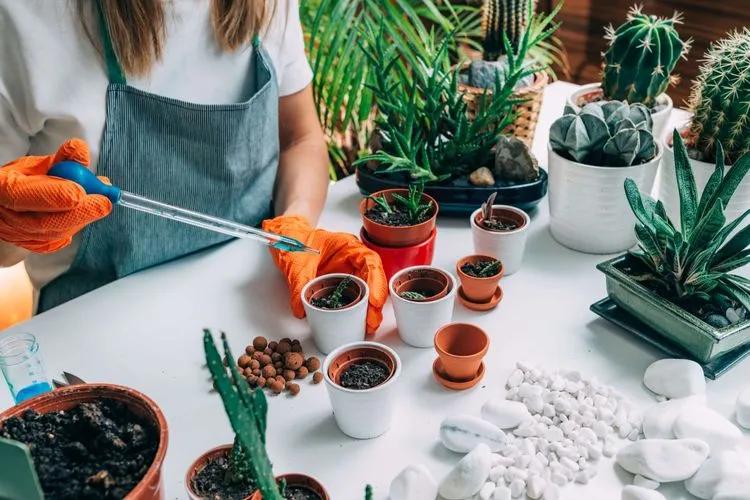
Select or Prepare the Soil
The roots of a plant are in something usually called a substrate. This is not always the usual soil: plants can be grown in coconut fiber, pine bark, moss, fired clay, stones, synthetic materials, or in an aqueous solution with electrolytes.
- Versatile peat-based substrates are suitable for most plants. Unfortunately, the composition on the packaging does not distinguish between good and bad soil. Bad soil is light and red in color; water on it collects in balls and does not go inside for a long time but gurgles on the surface. Over time, such soil compresses into a lump, lags far behind the edges of the pot, and deep grooves form around the perimeter. Good soil is black-brown, quickly and evenly soaked with water; when it dries out, it changes slightly in volume.
- The earth can be gently tamped with your fingers to push it between the roots and fix the plant vertically. It makes no sense to leave air pockets: the earth will settle after the first watering.
- For some plants, you will have to research or even prepare a special mixture. For Phalaenopsis (the most popular Orchids), you need to buy pine bark and cut it into large cubes. Cacti and other Succulents are planted in a mixture containing at least half of the baking powder: stones, coarse sand, lava chips, and zeolite. Venus Flytrap (insectivorous plant) likes pure high-moor peat.
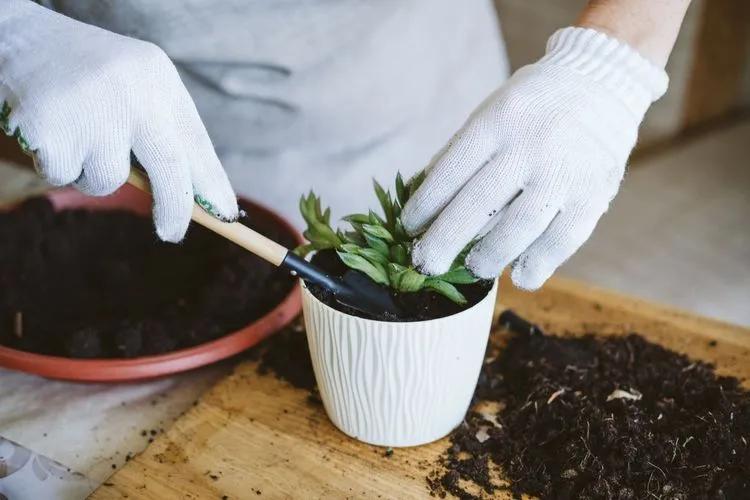
Care Recommendations
Successful transplantation is an essential process, yet not a guarantee of success. Now, you need to take care of the plant regularly. Don’t worry: following these simple hints will keep the plant well-maintained.
- Wipe the dust off the leaflets of the plant; they like it very much! Wipe the leaflets with dry or wet rags. We recommend wet ones as they provide additional moisture for the plant.
- Keep the plant away from heating appliances, radiators, and direct sunlight, as the leaves will quickly dry from asphyxiation.
- If you plan to travel for a long time and there is no one to care for the plant, use automatic irrigation for domestic plants. It can be bought in most flower shops.
- If you see roots on the surface of the soil, then it’s a call to transplant the plant into a new, bigger pot. Replant your plant every 2-3 years to let it grow.
How to Make Your Plant Feel Comfortable on a New Place
Having exposed the plant for the adaptation period, try to disturb it less.
- Do not rearrange or rotate the pots and avoid contact altogether.
- Monitor soil moisture and maintain light conditions.
It may take months for a plant to get used to the new conditions. After several weeks, place the flower pot in a permanent place. Further care for the plant will consist of watering and, if necessary, spraying. The flower should not be fertilized for at least a month after transporting it. In the future, nutrients should be introduced, focusing on the development cycle of a particular plant.
After all, every plant has its adaptation period; some plants elongate, while others, on the contrary, grow to the ground and expand. All of these changes happen due to climatic conditions. Plants can adapt to the environment in which they live, but it affects their development. Thus, if the plant does not get enough moisture, it will survive for some time, but its growth will be limited, and its appearance might change a bit.
Indeed, sometimes it happens that a plant can remain without water for a long time. Thus, it is advised to equip plants with drip irrigation at the time of departure; especially moisture-loving flowers will not survive a prolonged lack of water. But succulents, cacti, and several other plant species can survive for weeks without constant watering.
Adaptation for Outdoor Plants
Having purchased planting material, consider the prospects for its further development, considering the plant's size, the characteristics of the root system, and the biological factors of the species. The optimal planting time for most plants is early spring. During the growing season, the plants manage to root well. Understanding how plants adapt to life on land can help you provide them with the necessary care.
Working in the garden with plants begins with planting in a permanent place. The subsequent development and durability of the tree depend on this. Here you need to pay attention to the preparation of the landing pit and the landing technique.
It is practical to use preparations for rapid rooting and development of the root system when planting and during plant survival. They can be mixed with the soil with which the planting pit is filled, dust the root system and spill the seats after planting with a solution.

Indoor plants have many advantages: they purify the air, reduce stress, help relax, even calm the eyes and increase appetite. If you feel the urge to have a pet in a pot, then have a go; you won’t regret it!
